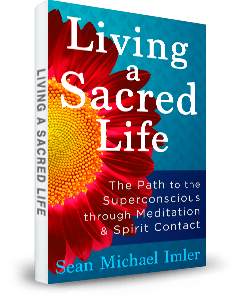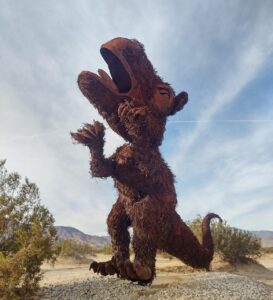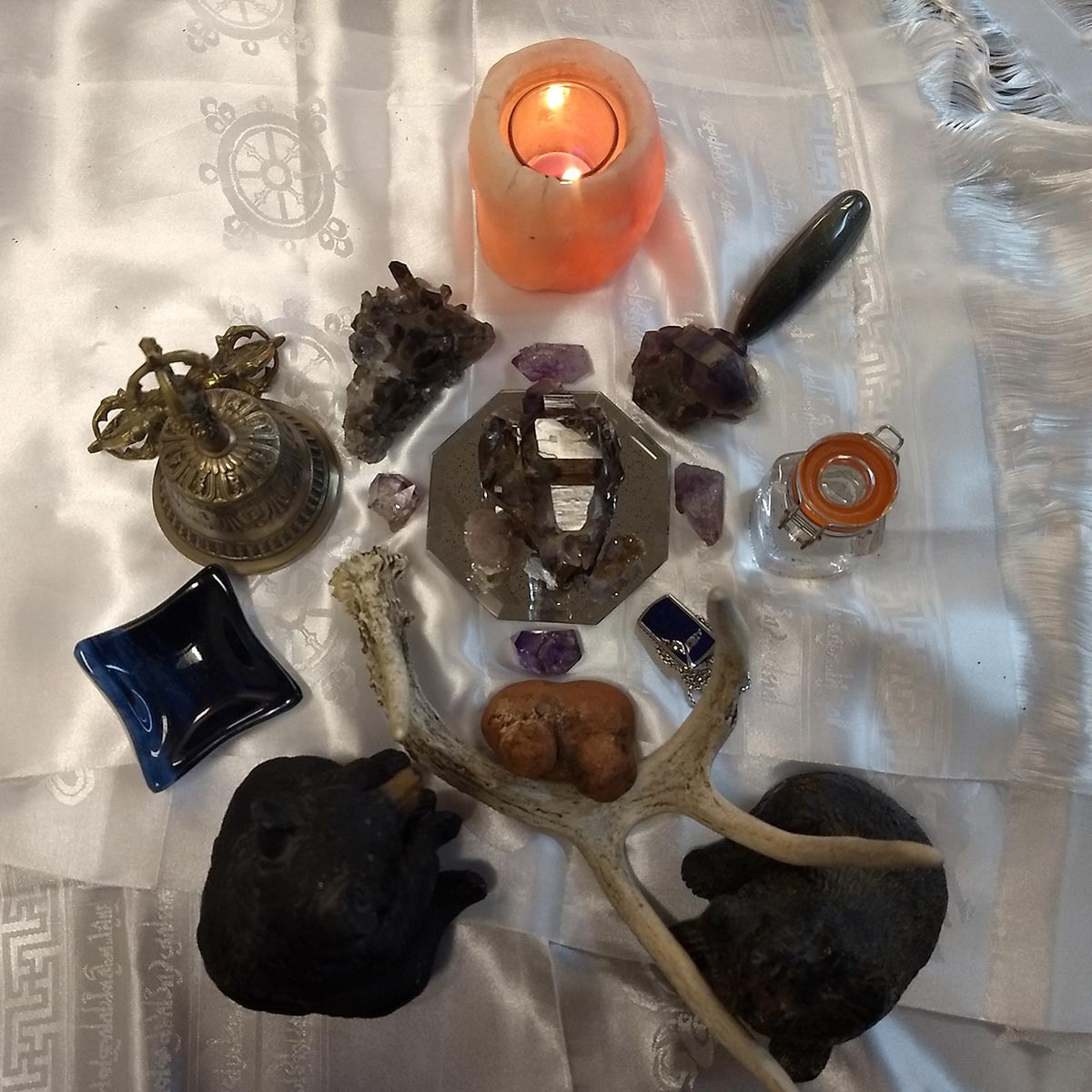Before embarking on our journey through the fascinating world of reincarnation embraced by diverse cultures, it’s crucial to understand that each perspective has unique interpretations, rituals, and beliefs surrounding this concept. Reincarnation, in its most basic form, is the belief in the rebirth of the soul in another body after death. However, the manner in which it is perceived and applied varies greatly from culture to culture.
Contents
Let’s delve into some of the most prominent cultures that have incorporated the doctrine of reincarnation into their beliefs and teachings.
The Hindu Perspective on Reincarnation
From my thoughtful studies and experience, I’ve learned that the Hindu perspective on reincarnation is both fascinating and deeply ingrained into their spiritual beliefs. The concept is referred to as “samsara”, the cycle of birth, death, and rebirth, driven by karma (the law of cause and effect).
Understandably, the Hindu doctrine of reincarnation is not a simple concept, but rather a complex system of beliefs that has evolved over thousands of years. It is founded on the premise that the soul or “atman” is eternal (being neither created nor destroyed) and that the body is transient, serving as a temporary vessel for the soul’s journey.
“Just as a man discards worn-out clothes and puts on new ones, so also the embodied Self discards worn-out bodies and takes on others that are new.” – Bhagavad Gita (2:22)
Let’s delve deeper into the key aspects of the Hindu belief in reincarnation:
Karma and Reincarnation
The complex interplay of karma and reincarnation forms the backbone of Hinduism’s moral and ethical codes. Karma is the accumulated sum of one’s good and bad deeds. These actions directly influence the circumstances of one’s next life, including their caste, gender, and physical attributes. There is an inescapable justice in this system: each soul creates its future life by its actions in the present one.
Moksha: The End of the Cycle
The ultimate goal of every Hindu soul is to attain “moksha” or liberation from the cycle of reincarnation. This state of eternal peace and bliss is achieved when the soul has balanced its karma and comprehended the ultimate reality of the universe. Moksha is not a destination but a state of mind, a realization of the soul’s divine nature.
It is crucial to recognize that reincarnation within Hinduism isn’t a punitive system, but rather an opportunity for the soul to learn, grow, and eventually merge with the divine. This belief leads to a sense of duty (dharma) to live a just and moral life, as one’s actions in the present will shape their future incarnations.
This exploration of the Hindu perspective on reincarnation is merely introductory. Hindu thought, with its millennia-old scriptures and interpretations, cannot be fully encapsulated in a single discussion. However, understanding the basics gives us a framework to appreciate the depth and richness of this ancient tradition.
The Buddhist View on Reincarnation
I can assert that Buddhism presents one of the most intricate teachings on the subject. The Buddhist view of reincarnation, known as rebirth in this faith, differs considerably from that of other religions. For Buddhists, the cycle of birth, death, and rebirth is a complex process driven by desire and ignorance. This cycle, referred to as Samsara, is often depicted as a wheel, symbolizing its continuous, cyclical nature. It’s crucial to note that, in Buddhism, it is not the soul or self that reincarnates, but rather the ‘stream of consciousness’ that carries karmic imprints from one life to the next.
The concept of Anatta, or ‘non-self’, is central to the Buddhist understanding of reincarnation. This doctrine asserts that there is no permanent, unchanging self. Instead, the individual is seen as a collection of five aggregates or ‘skandhas’ (form, sensation, perception, mental formations, and consciousness), which are constantly changing due to causes and conditions. Consequently, the ‘person’ who is reborn is neither entirely different from nor exactly the same as the ‘person’ who died.
“Just as a candle can light another candle, so too, the stream of consciousness of a being can light the stream of consciousness of another being. While the two streams are not identical, they are not entirely different either.”
In terms of the process of rebirth itself, Buddhism teaches that the consciousness of a deceased individual, carrying the karmic imprints of their past actions (karma), grasps onto a new existence at the moment of conception in a mother’s womb. This is driven by ‘tanha’, or craving, which arises from ignorance of the true nature of existence.
Breaking free from this cycle of rebirth is the ultimate goal in Buddhism. This is achieved through the attainment of Nirvana, a state of liberation and enlightenment, where all desires and ignorance are extinguished. It is important to note that Nirvana is not a ‘place’ like heaven, but rather a state of being where suffering (dukkha) ceases and the cycle of rebirth ends.
Islam and Reincarnation
Within the vast and intricate tapestry of religious and spiritual beliefs, reincarnation emerges as a common thread, albeit interpreted differently across diverse cultures and doctrines. As I delve into the doctrine of Islam, it becomes evident that the concept of reincarnation, as understood traditionally in religions such as Hinduism or Buddhism, does not hold an equivalent place.
Islam, one of the world’s major monotheistic religions, primarily embraces the concepts of resurrection and the afterlife, rather than reincarnation. The principle of tawhid, the oneness of God (Allah), underpins these beliefs and forms the backbone of Islamic theology. This fundamental principle asserts that life is a one-time journey, with the human soul (nafs) transitioning after death into an eternal afterlife (akhirah), where it will face judgment based on deeds in the earthly life (dunya).
“And Allah created you; then He will cause you to die. Then He will bring you [back] to life, and then to Him you will be returned.”
~(Quran 30:40)
Though the concept of reincarnation— the cycle of birth, death, and rebirth, does not figure prominently in Islamic teachings, certain Islamic sects, such as the Druze and the Alawites, have incorporated reincarnation into their belief systems.
Community Examples
Let’s consider the Druze community, a minority religious group primarily based in the Middle East, whose beliefs are rooted in Ismailism, a branch of Shia Islam. The Druze belief in reincarnation is known as tansukh, where the soul is thought to transfer immediately at death to a newborn. However, this belief significantly differs from the traditional understanding of reincarnation as there’s no progression or regression through different life forms; the soul remains human.
Similarly, the Alawites, another offshoot of Shia Islam based primarily in Syria, also hold beliefs related to reincarnation. They believe in a form of metempsychosis, where the souls of the righteous are reborn in purer forms, while the souls of the wicked may be condemned to reincarnate in lesser forms.
It should be noted, while it’s fascinating to explore the diverse interpretations and nuances within different Islamic sects, we must acknowledge that the doctrine of reincarnation is not a mainstream belief in Islam. The majority of Muslims adhere to the teachings of resurrection and the afterlife, with the concept of reincarnation finding limited acceptance among certain Islamic sects.
The Ancient Greek Belief in Reincarnation
As we delve into the labyrinth of ancient Greek thought, it’s fascinating to discover their profound beliefs about the cycle of birth, death, and rebirth. Known for their rich mythology and philosophical inquiries, the ancient Greeks held diverse views on reincarnation- a concept they often referred to as metempsychosis.
Pythagoras’ Perspective
Foremost among these beliefs was the idea that souls were immortal, a doctrine fervently espoused by the famed philosopher Pythagoras. According to him, the soul, upon death, moved to another body, thus ensuring an endless cycle of birth and death. This belief found resonance in his Pythagorean school, where followers adopted a lifestyle characterized by strict dietary rules (abstinence from meat was mandatory), silence, and meditative practices- all aimed at purifying the soul for its impending rebirth.
“Death is not the end; instead, it is the beginning of a new cycle.”
Plato’s Perspective
Another notable proponent of reincarnation was the philosopher Plato. In his dialogues, particularly ‘Phaedrus’ and ‘Meno’, he elucidates the concept of anamnesis, the idea that learning is essentially a form of remembering. This formed the basis of his belief in the pre-existence of the soul, which he thought reincarnated multiple times, each life offering an opportunity to remember the knowledge that had been forgotten.
However, it’s worth noting that not all ancient Greeks shared the same view towards reincarnation. The Stoics, for instance, believed in a cyclical universe where every event, including individual lives, repeated after a set period. Meanwhile, the Epicureans outright rejected reincarnation, focusing instead on the pleasures of the present life.
So, as we see, the ancient Greek understanding of reincarnation was far from monolithic; it was a rich tapestry of conflicting ideas and philosophies, yet each one fascinating in its own way. Despite the differences, the concept of reincarnation (or metempsychosis, to use their term) had a profound influence on Greek society and thought, shaping their understanding of life, death, and the soul’s immortality.
Reincarnation in Norse Mythology: From Valhalla to Midgard
In the rich tapestry of Norse mythology, the concept of reincarnation is both unique and fascinating. As a student of ancient beliefs (as well as an author versed in various theological studies), I find the Norse interpretation of life, death, and rebirth to be an extraordinary blend of the gritty realism of mortality and the mystical allure of the eternal.
According to Norse tradition, the concept of reincarnation is not as straightforward or universally accepted as in some other cultures (like Hinduism or Buddhism, where the cycle of birth-death-rebirth is a fundamental cornerstone). Instead, Norse mythology offers a more selective and nuanced view, where only certain individuals are deemed worthy of reincarnation (or rebirth), while others embark on a final journey to the afterlife realms of Hel, Valhalla, or Folkvangr.
The Honored Dead and Reincarnation
The Norse believed that warriors who died honorably in battle were rewarded with a seat in Valhalla, Odin’s majestic hall, to feast and prepare for the final battle of Ragnarok. However, it’s important to understand that Valhalla was not viewed as a final destination. It was, in essence, a temporary respite, a place where the honored dead could rest, recover, and prepare for the inevitable cycle of conflict and rebirth. This reflects a crucial aspect of the Norse worldview: that life and death are intrinsically linked, one giving meaning to the other, and that the cycle of existence is an eternal interplay of these two fundamental forces.
Rebirth in Norse Lineage
Interestingly, the Norse also believed in a form of reincarnation within the lineage of a family. The belief was that an ancestor could return to the living world through newborn children. This belief was particularly prevalent among nobility and royalty, where it was commonly held that great leaders and warriors could (and would) return to lead their people once more. A child who bore a strong resemblance to a deceased ancestor was often considered to be the reincarnation of that individual, embodying their spirit, prowess, and wisdom.
Midgard: The Realm of Mortals
Midgard, the realm of humans, was viewed as a crucial battleground in the cosmic cycle of life, death, and rebirth. Every individual was thought to play a role in this grand narrative, with their actions and choices shaping not only their personal destiny but also the fate of the cosmos. Reincarnation in this context was seen as a unique opportunity, a gift from the gods, for an individual to return to Midgard and continue their journey of growth, learning, and contribution to the collective destiny of their people.
While reincarnation in Norse mythology differs markedly from its counterparts in Eastern philosophies, it nonetheless offers a captivating perspective on life, death, and rebirth. It paints a picture of a world where existence is cyclical, where honor and courage are rewarded, and where individuals are given the opportunity to return to the mortal world and fulfill their destiny.
The Celtic Perspective on Reincarnation
Delving into the Celtic perspective on reincarnation, one quickly realizes that it is as rich and complex as the culture itself. The Celts, like many other ancient societies, viewed life as an ever-flowing cycle rather than a linear progression. Central to this belief system was the concept of reincarnation, which they believed was the soul’s journey through different physical forms and experiences across multiple lifetimes (a view fundamentally different from Western concepts of an afterlife).
The Celts believed that the soul could return to the physical world in various forms: human, animal or even plant. This belief was rooted in their deep respect and connection to nature, where they saw the cycle of life, death and rebirth mirrored in the changing of seasons, the growth and decay of plants, and the lifecycle of animals. They believed that these cycles were part of a larger journey of the soul, which grew and evolved through each reincarnation, gaining wisdom and understanding from each life.
“The Celts perceived the universe as a single gigantic organism, animated by a life force that moved through all beings. Each life, whether human, animal, or plant, was considered a step on the journey of the soul.”
The Connection to Social Structure
Furthermore, the Celtic view of reincarnation was intricately linked to their social structure. Individuals who led virtuous lives were said to be reincarnated into higher social statuses, while those who lived immoral lives were believed to return in lower forms. This concept provided a moral framework that encouraged ethical behavior and personal responsibility.
Yet, it is vital to recognize that the Celtic belief in reincarnation was not driven by a fear of punishment or a desire for reward. Instead, it was seen as a natural and inevitable part of existence, a process that allowed the soul to learn, grow, and evolve. The Celts embraced the idea of reincarnation, viewing death not as an end, but as a transition to another stage of life.
While Celtic society and its beliefs have evolved over time, the concept of reincarnation remains a significant part of Celtic spirituality. Modern practitioners often focus on the transformative aspects of reincarnation, emphasizing personal growth, learning from past lives, and the interconnectedness of all life.
To sum up, the Celtic perspective on reincarnation is a multi-faceted belief system deeply rooted in nature, morality, and the spiritual evolution of the soul. It offers a unique lens through which to explore the concept of reincarnation, revealing the rich tapestry of beliefs that have shaped and continue to inform Celtic culture.
The Aztec Belief in Reincarnation
When we delve into the heart of Aztec culture, we find a fascinating belief system steeped in the concept of reincarnation. The Aztecs, a Mesoamerican people who flourished in the central regions of Mexico from the 14th to the 16th century, perceived death not as an endpoint but as a natural phase in an ongoing cycle of existence. Their belief in reincarnation was not merely a facet of their religious doctrine but was integral to their understanding of the cosmos and their place within it.
The Aztecs conceived the afterlife as a complex, multi-layered realm (known as Mictlan). It was not a place of eternal rest, but a challenging journey towards rebirth. They imagined the soul embarking on a perilous voyage through nine underworld levels, each fraught with trials and tribulations. Only upon surmounting these obstacles, could the departed soul be reborn into a new existence.
The manner of one’s death was also intimately tied to the nature of one’s rebirth, pointing to a deeply ingrained belief in karmic justice. For instance, warriors who perished in battle were believed to be reincarnated as butterflies or hummingbirds, symbols of beauty and valor. On the other hand, those who died of disease or in childbirth were thought to ascend to the Tlalocan, the paradise of Tlaloc, the rain god, where they would be reborn as precious cloud formations.
Cyclical View of Life and Death
It is evident that the Aztecs held a cyclical view of life, death, and the cosmos, underpinned by a firm belief in the principle of reincarnation. The journey of the soul, as they envisaged it, was no linear progression but an ever-revolving wheel of existence.
What is particularly intriguing about the Aztec belief system is the role of earthly deeds in determining one’s fate in the afterlife. The Aztecs were not fatalists; they believed in the power of individual action. They understood that the choices made in this life directly influenced the path of the soul in the afterlife and its eventual reincarnation. Thus, to live a virtuous life was to ensure a favorable rebirth.
It’s worth noting that the Aztec reincarnation beliefs have parallels in many other cultures. From Hinduism’s samsara (the cycle of death and rebirth) to Buddhism’s belief in karma and rebirth, there are striking similarities. These shared ideas underscore the universal human longing for continuity and transcendence, underscoring the profound resonance of the principle of reincarnation.
Reincarnation in African Traditional Religions: A Continuation of the Ancestors’ Legacy
In the vast landscape of African traditional religions, the concept of reincarnation holds a significant place, serving as a bridge that connects the physical and spiritual realms. The essence of reincarnation, within this context, is not solely about the rebirth of the individual spirit in a new physical form, but more importantly, it is a continuation of the ancestors’ legacy and the preservation of the communal identity.
In many African societies, it is firmly believed that the ancestors maintain an active influence on the lives of their descendants. The dead are not seen as truly departed; rather, they are considered to be in a different state of existence, a spiritual realm where they continue to watch over and guide their lineage. This cycle of birth, death, and rebirth is seen as a way for the ancestors to maintain their presence and influence in the world of the living.
There are two main forms of reincarnation in African traditional religions: reincarnation within the family line (known as “re-birth”) and reincarnation into another species (often seen as a result of punishment for moral failings in a past life). The former is seen as desirable, representing a continuation of the ancestors’ legacy, while the latter is feared and often associated with social stigma.
“In African traditional religions, reincarnation is viewed as a cyclical journey of the soul, harmoniously intertwined with the rhythm of nature and the ancestral realm.”
Reincarnation within the Family Line
Reincarnation within the family line is a common belief among many African cultures. In this context, it is perceived that an ancestor’s spirit can return to the world of the living through a newborn child in their lineage. Such a child is often said to have old soul characteristics and is usually named after the presumed reincarnated ancestor as a sign of respect and recognition. This belief underscores the strong bonds within African families and the sense of continuity and identity within the community.
Reincarnation into Another Species
The belief in reincarnation into another species is typically linked with moral and ethical teachings. An individual who lived a morally deficient life may be reincarnated into a lower animal form as a form of divine retribution. This belief serves as a moral compass, encouraging individuals to live righteously and uphold the values of their community. It is, in essence, a tool for social control and moral instruction.
The African perspective on reincarnation interweaves the physical and spiritual realms, emphasizing the continuity of life and ancestral legacy. It is embedded with moral teachings guiding individuals towards virtuous living, reinforcing communal bonds, and underscoring the importance of maintaining the ancestral legacy.
Reincarnation in Taoism: The Path to Immortality
As a fervent believer in the doctrines of Taoism, I find that reincarnation is a topic of great importance within this philosophical tradition. Taoism, known for its emphasis on harmony within the cosmos, views reincarnation not merely as a cycle of rebirth but as a pathway to attaining immortality. Here, the soul (also known as ‘ling’) is believed to undergo a process of transmigration, a journey through various forms of existence, a concept that is both intriguing and mystifying.
Taoists believe in the continuous cycle of life, death, and rebirth, which is essentially the concept of reincarnation. The life of an individual does not end with death but continues in another form. The ‘ling’ or soul, according to Taoist belief, is not a singular entity but is divided into three parts (Hun and Po), each with a specific journey post-death.
“Death is but the beginning of a new life in a new form. When the spirit leaves the body, it continues its evolution through reincarnation.”
The Three Parts of the Soul in Taoism
In Taoism, the soul has three distinct parts: the Upper Hun, the Middle Hun, and the Lower Po. The Upper Hun is the spiritual soul, which, after death, ascends to the heavens to continue its cycle of reincarnation. The Middle Hun remains in the grave with the body for a while before joining the Upper Hun. The Lower Po, on the other hand, returns to the earth, representing the physical aspects of existence.
Reincarnation and Immortality in Taoism
In the quest for immortality, reincarnation plays a critical role in Taoist beliefs. Immortality, in this context, is not the physical living forever but rather the soul’s evolution to higher levels of existence. It is a spiritual journey through various forms of life, leading to a state of divine enlightenment and liberation. This journey is highly individualized, reflecting the unique paths that each soul takes in its pursuit of spiritual growth. Taoists believe that through careful cultivation of one’s life force or ‘chi’, and by leading a virtuous life, one can attain this spiritual immortality.
Reincarnation, hence, is not simply a cycle of life and death, but a path towards spiritual enlightenment and ultimate liberation. This journey is not easy; it requires a life of discipline, humility, and contemplation. But in the end, Taoists believe that the rewards are immeasurable, leading to a state of eternal bliss and ultimate understanding of the cosmos.
In the grand scheme of universal harmony, the doctrine of reincarnation serves as a constant reminder of our spiritual journey and our ultimate goal: to become one with the Tao, the ultimate reality of the universe. This profound belief is the cornerstone of Taoist philosophy and provides an intricate understanding of life, death, and the path to immortality.
Christianity: The Resurrection and Eternal Life
In Christianity, the concept of reincarnation is generally dismissed, replaced instead by doctrines concerning the resurrection and eternal life. The core of Christian belief centers around the life, death, and resurrection of Jesus Christ, who is seen as the model for all human life and afterlife.
While not all Christian denominations interpret these events in exactly the same way, the overarching narrative of Christ’s resurrection provides a framework for understanding the Christian perspective on life after death. It is this resurrection, rather than a cycle of birth and death, that Christians anticipate after their earthly lives.
The Christian Bible, particularly in the New Testament, outlines the promise of eternal life. For example, in the book of John (3:16), it is written:
“For God so loved the world that he gave his one and only Son, that whoever believes in him shall not perish but have eternal life.”
~John 3:16
Contrary to the concept of reincarnation, the Christian doctrine of eternal life indicates a linear progression rather than a cyclical one. That is to say, a person is born, lives, dies, and then experiences resurrection and eternal life rather than being reborn into a new physical existence.
This is not to suggest that all Christians interpret this doctrine in the same way. Indeed, there are many interpretations and beliefs within Christianity about the nature of the afterlife, the resurrection, and eternal life. A few of these interpretations include the belief in a literal physical resurrection, a spiritual resurrection, or a metaphorical resurrection.
Christianity and the Bible, Was the Doctrine of Reincarnation Removed?
As we delve into the topic of reincarnation from a Christian perspective, it’s important to note the lack of explicit references to it in the Bible. Yet, there have been suggestions from some historians and theologians that early Christianity may have embraced reincarnation but such teachings were purportedly suppressed or removed from official doctrine during the church’s formative years.
There are a few Biblical passages that some interpret as suggesting reincarnation. These interpretations are not widely accepted, though, and fall into the realm of personal belief rather than church doctrine. Some of the passages often cited include:
“And as he was passing by, he saw a man blind from birth. And his disciples asked him: ‘Rabbi, who has sinned, this man or his parents, that he should be born blind?'”
(John 9:1-2)
“And he said unto them, ‘You will indeed drink from my cup, but to sit at my right or left is not for me to grant. These places belong to those for whom they have been prepared by my Father.'”
(Matthew 20:23)
The first passage has been interpreted by some to imply that the man could have sinned before his birth, suggesting a prior life. The second passage hints at the idea of a predetermined future or destiny, a concept that aligns with some interpretations of reincarnation.
Yet, such interpretations are seen as non-traditional and are even considered heretical by some Christian denominations. It is, therefore, crucial to approach these with caution and an understanding that they reflect individual viewpoints, rather than mainstream Christian teachings.
Historically Speaking
From a historical perspective, the suggestion that early Christianity may have embraced reincarnation stems from the writings of various church fathers and early Christian thinkers. Origen of Alexandria (185-254 AD), a theologian who had a significant influence on early Christian thought, is often cited as a proponent of pre-existence, a form of reincarnation. Origen’s ideas, however, were later declared heretical, and his works were posthumously anathematized at the Second Council of Constantinople in 553 AD.
While it’s clear that the doctrine of reincarnation does not find mainstream acceptance in Christianity, it’s equally evident that interpretations vary, demonstrating the diverse and complex nature of religious belief. As we continue to explore reincarnation from different cultural perspectives, it’s important to approach each with an open mind, acknowledging the rich tapestry of beliefs and teachings that shape our understanding of life, death, and what lies beyond.
Native American Cultures: Ancestral Spirits and Rebirth
As we delve deeper into the world of reincarnation, we find ourselves immersed in the rich tapestry of belief systems that make up Native American cultures. Unique and diverse, these cultures offer an intriguing perspective on reincarnation, often referred to as the cycle of ancestral spirits and rebirth.
Native American beliefs about reincarnation are closely tied to their views on the sanctity of life and the natural world. They believe that all things (the earth, the sky, animals, and humans) are interconnected, an interplay of energies and spirits that permeate everything around us. This is not merely a metaphysical concept, but a way of life that influences their social structures, rituals, and daily interactions.
In many Native American tribes, the belief in reincarnation is not limited to human beings alone. They believe that animals, plants, and even inanimate objects like rocks and rivers have spirits that can be reborn. This results in a deep reverence for all forms of life and an understanding of the cyclical nature of existence.
While these beliefs vary from tribe to tribe, there are some common threads. For instance, reincarnation is often seen as a process of spiritual growth and learning. According to the teachings of various tribes, an individual’s spirit returns to the physical world to learn new lessons, resolve past mistakes, or fulfill unfinished tasks (a concept akin to the Hindu belief in ‘Karma’).
Let’s take a closer look at how reincarnation is understood and practiced in two major Native American cultures: the Lakota and the Hopi.
Lakota Beliefs about Reincarnation
The Lakota, a tribe indigenous to the Great Plains of the US, hold a strong belief in the reincarnation of the soul after death. They perceive life as a circle (known as the ‘Circle of Life’), where every ending marks a new beginning. It is believed that spirits return to the earth in new bodies to continue their journey of growth and learning. This belief inspires a profound respect for the continuity of life and the interconnectedness of all beings.
Hopi Beliefs about Reincarnation
For the Hopi, an indigenous tribe of northeastern Arizona, reincarnation is a part of the cyclical pattern of existence. They believe in the concept of ‘Katsina’, where spirits return to the earth to guide and protect the living. These spirits are believed to reincarnate into new bodies, often within the same family line, symbolizing the unbroken connection between the past, present, and future.
In conclusion, the Native American perspective presents reincarnation as a multi-faceted concept intertwined with their respect for nature, spiritual growth, and the interconnectedness of all life forms.
In Conclusion
Having been a past life regression practitioner for well over a decade and having done hundreds of sessions, I’ve listened to amazing stories being recanted by clients while under hypnotic trance. I still always say that whether you believe in it or not, the subconscious mind reveals highly important and relevant information if you’re willing to drop your idea of what reality is. Simply allow something to emerge from the deep mind that has your healed state as a priority for you.
If you’re interested in reading more, consider “What is Past Life Regression and How Does It Work?” If you’d like to discuss the possibility of having a session, contact me for a Consultation.
If you’re curious about this subject, consider reading “Debate About What Makes Us Deny Reincarnation.”











